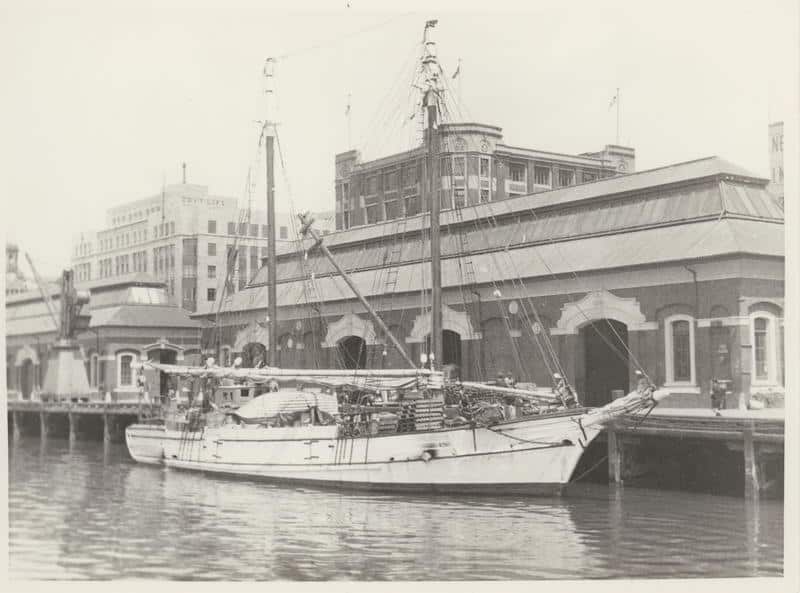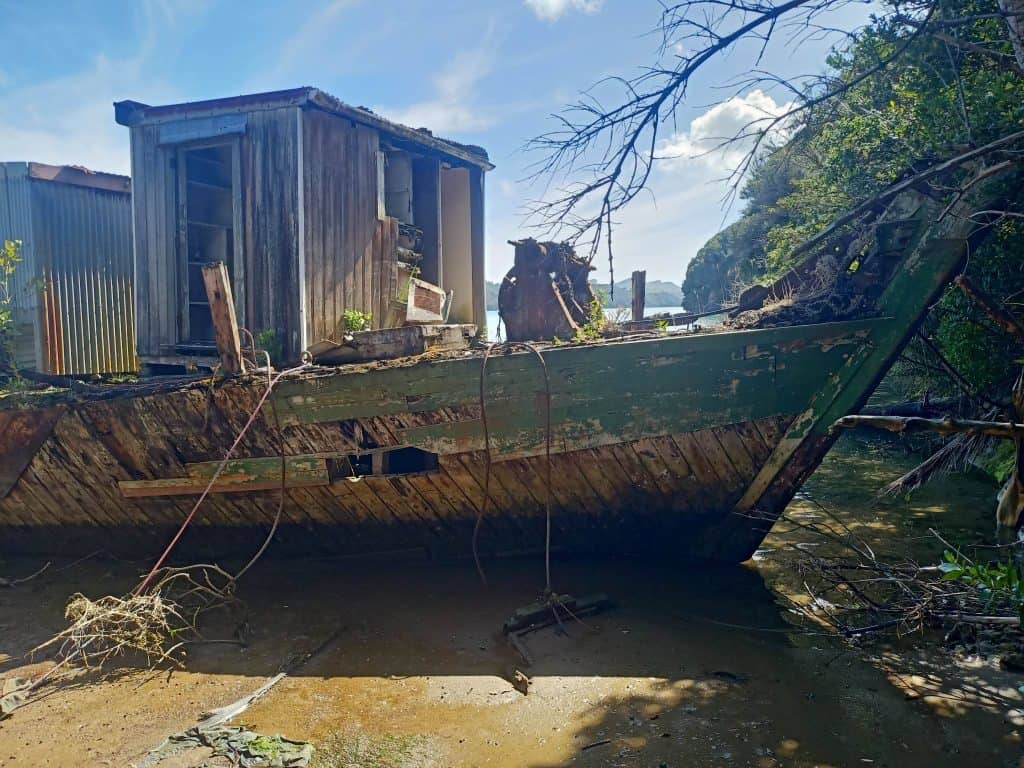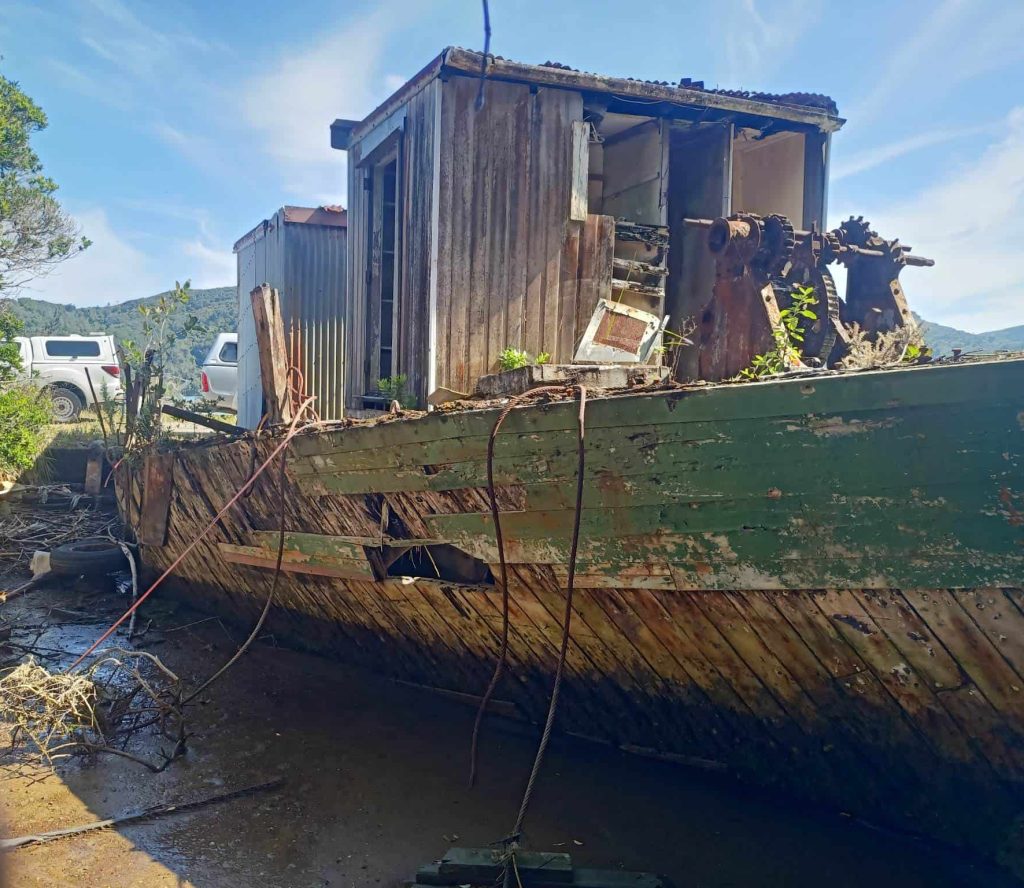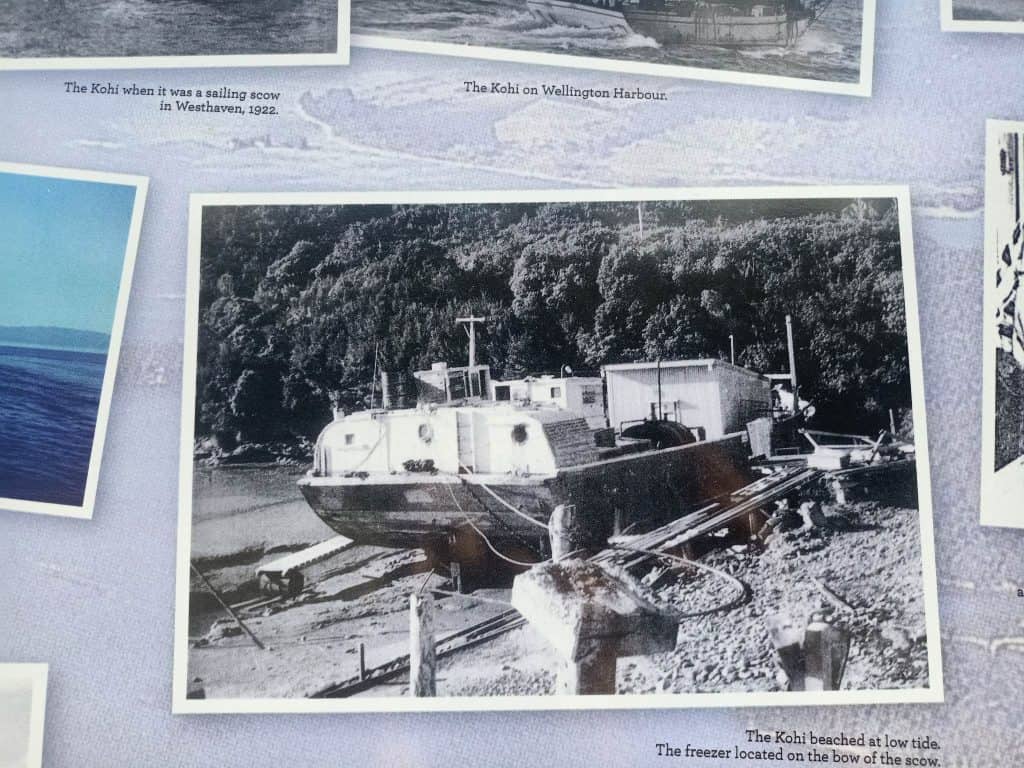Kohi: 91 ft Scow/Fish Freezer in Golden Bay
Build Date
1911
Boat Builder
G.T. Niccol
Length
91 ft/28m
Weight
62 Ton

Kohi Before Cray Fishing
The Kohi started life transporting Kauri logs for an Irishman and had the gaelic name, Cead-mile-failte (meaning ‘a hundred thousand welcomes’).
Three years later Cead-mile-failte was purchased by James and William Biddick who renamed the scow Kohi, after Kohimarama the station property leased by the Biddick family. The school at Kohimarama now has the bell and flagpole from this scow. The Biddick brothers purchased Kohi to transport their cattle and sheep, but they also raced their different scows at Anniversary Weekend regattas.
Kohi has had many owners since the Biddick brothers. She was owned by T. Eckford & Co. of Blenheim before they sold her to the Parry Bros. of Auckland in 1947 who used her to trade to Tairua, Tauranga, Cape Runaway, Gisborne, Whangarei.
Kohi was hen sold to the Cook Strait service where she was used to help lay 5 km of cable in the Cook Strait. Later again Kohi was owned by Sullivan Shipping Co. of Wellington and at one point Kohi worked for the Inter Island Shipping Co. Ltd.
During Kohi’s long life she was featured in a silent film, used as a farm vessel, helped save the Valmarie a schooner that had run aground on Farewell Spit as well running cable and working in the fishing industry.
Kohi also seemed a bit accident prone as she is said to have collided with four scows, broken a shaft, damaged her machinery and caught on fire. She was also caught sitting on a sandbar in a photograph belonging to the Port Mapua Maritime Museum.
Disaster For Kohi and Cray Fishing
It’s unclear when it all went wrong for Kohi as the panel at Mangarākau Wharf says she made her last voyage in 1966 but two other sources say 1962 was the bad year for Kohi. Either way in the 1960s Kohi sank next to Picton’s Waitohi wharf. She was left under water lying on her port side for several days whilst pumps on the wharf and a nearby fishing boat worked to get her floating again.
After they got Kohi floating again, she stayed in Picton for several months unable to sail. Kohi was then towed to Nelson where she could be slipped and surveyed by the Marine Department surveyor. But this did not go well for Kohi as she was condemned. They stripped her of her two engines, winches, mast, lifeboat and cargo derrick.
The council planned to burn Kohi but a group of seven Nelson fisherman saved her. They hatched an ingenious plan to get around Marine Department rules for cray fishing. The rule was cray fish were not allowed to be tailed whilst at sea. This meant cray fishing in Golden Bay and the West Coast was not as economical as the fishermen would have to steam a long way to port to land their crays and start processing them. To get around this they purchased Kohi, put two large freezers on her deck and towed her to Westhaven Inlet in Golden Bay. From here they could use Kohi as a floating fish freezer and jetty, thereby allowing them to tail their crays and freeze them in Westhaven Inlet. From here the crays could then be trucked to Nelson frozen.
This proved to be Kohi’s last move as today, she still sits in Westhaven Inlet but she has fallen into disrepair. Now she just stores cray pots and stands at the wharf as a reminder of the not too distant past.


References
To research Kohi we used the Journal of the Nelson and Marlborough Historical Societies, Volume 1, Issue 2, November 1982, Stuff.co.nz, The interpretation panel at Mangarākau Wharf, Information in the Port Mapua Maritime Museum exhibition and information in Photo News No 74, December 10 1966.
If you are able to get hold of a copy at Auckland Central Library the Biddick’s Scow Kohi and the Kohi School by Jim Hansen would also be interesting.
Related Posts
Noelene – 45ft boat used for mail, goods transportation and fishing
Matai – Commercial fishing boat built by Pop Jorgensen
Jean – 45ft Jack Guard built South Island fishing boat.
Southern Isle – 92 ft scow built by D.M. Darroch in 1901.


